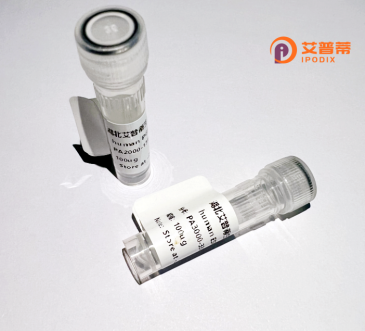
| 纯度 | >90%SDS-PAGE. |
| 种属 | Human |
| 靶点 | NBR1 |
| Uniprot No | Q14596 |
| 内毒素 | < 0.01EU/μg |
| 表达宿主 | E.coli |
| 表达区间 | 1-966 aa |
| 活性数据 | MEPQVTLNVTFKNEIQSFLVSDPENTTWADIEAMVKVSFDLNTIQIKYLDEENEEVSINSQGEYEEALKMAVKQGNQLQMQVHEGHHVVDEAPPPVVGAKRLAARAGKKPLAHYSSLVRVLGSDMKTPEDPAVQSFPLVPCDTDQPQDKPPDWFTSYLETFREQVVNETVEKLEQKLHEKLVLQNPSLGSCPSEVSMPTSEETLFLPENQFSWHIACNNCQRRIVGVRYQCSLCPSYNICEDCEAGPYGHDTNHVLLKLRRPVVGSSEPFCHSKYSTPRLPAALEQVRLQKQVDKNFLKAEKQRLRAEKKQRKAEVKELKKQLKLHRKIHLWNSIHGLQSPKSPLGRPESLLQSNTLMLPLQPCTSVMPMLSAAFVDENLPDGTHLQPGTKFIKHWRMKNTGNVKWSADTKLKFMWGNLTLASTEKKDVLVPCLKAGHVGVVSVEFIAPALEGTYTSHWRLSHKGQQFGPRVWCSIIVDPFPSEESPDNIEKGMISSSKTDDLTCQQEETFLLAKEERQLGEVTEQTEGTAACIPQKAKNVASERELYIPSVDLLTAQDLLSFELLDINIVQELERVPHNTPVDVTPCMSPLPHDSPLIEKPGLGQIEEENEGAGFKALPDSMVSVKRKAENIASVEEAEEDLSGTQFVCETVIRSLTLDAAPDHNPPCRQKSLQMTFALPEGPLGNEKEEIIHIAEEEAVMEEEEDEEDEEEEDELKDEVQSQSSASSEDYIIILPECFDTSRPLGDSMYSSALSQPGLERGAEGKPGVEAGQEPAEAGERLPGGENQPQEHSISDILTTSQTLETVPLIPEVVELPPSLPRSSPCVHHHGSPGVDLPVTIPEVSSVPDQIRGEPRGSSGLVNSRQKSYDHSRHHHGSSIAGGLVKGALSVAASAYKALFAGPPVTAQPIISEDQTAALMAHLFEMGFCDRQLNLRLLKKHNYNILQVVTELLQLNNNDWYSQRY |
| 分子量 | 133.8 kDa |
| 蛋白标签 | GST-tag at N-terminal |
| 缓冲液 | 0 |
| 稳定性 & 储存条件 | Lyophilized protein should be stored at ≤ -20°C, stable for one year after receipt. Reconstituted protein solution can be stored at 2-8°C for 2-7 days. Aliquots of reconstituted samples are stable at ≤ -20°C for 3 months. |
| 复溶 | Always centrifuge tubes before opening.Do not mix by vortex or pipetting. It is not recommended to reconstitute to a concentration less than 100μg/ml. Dissolve the lyophilized protein in distilled water. Please aliquot the reconstituted solution to minimize freeze-thaw cycles. |
1. **"NBR1 and p62 as cargo receptors for selective autophagy of ubiquitinated targets"** by Kirkin, V., et al.
- 作者提出NBR1作为选择性自噬的关键受体,与p62协同识别泛素化底物,介导其通过自噬体降解。研究展示了重组NBR1的PB1和UBA结构域在底物结合中的作用。
2. **"Structural basis for sorting mechanism of p62 in selective autophagy"** by Ichimura, Y., et al.
- 通过重组蛋白实验解析NBR1及p62的PB1结构域寡聚化机制,阐明其如何形成多聚体以增强与自噬膜LC3蛋白的结合效率,促进聚集体包裹。
3. **"NBR1-mediated selective autophagy regulates inflammatory signaling pathways"** by Thurston, T.L.M., et al.
- 研究发现重组NBR1通过识别特定泛素链类型(如K63-linked)参与降解NF-κB信号通路成分,揭示其在炎症反应负调控中的功能。
4. **"Autophagic machinery at the phagophore assembly site facilitates NBR1-mediated aggrephagy"** 作者未提供
- 利用重组NBR1突变体证实其LIR基序与Atg8/LC3的结合为聚集体自噬(aggrephagy)所必需,并证明该过程依赖ATG5-ATG12复合体的形成。
NBR1 (Neighbor of BRCA1 gene 1) is a multifunctional scaffold protein first identified due to its genomic proximity to the breast cancer susceptibility gene *BRCA1*. It plays a critical role in selective autophagy, particularly in aggrephagy—the clearance of protein aggregates—and in maintaining cellular homeostasis. Structurally, NBR1 contains an LC3-interacting region (LIR) for binding autophagy-associated LC3/GABARAP proteins, a ubiquitin-binding zinc finger (UBZ) domain for recognizing ubiquitinated cargo, and a Phox/Bem1p (PB1) domain mediating self-oligomerization or interactions with partners like p62/SQSTM1. These features allow NBR1 to act as a selective autophagy receptor, targeting ubiquitinated substrates (e.g., misfolded proteins, damaged organelles) to autophagosomes for degradation. Beyond autophagy, NBR1 is implicated in endosomal trafficking, antiviral responses, and cancer progression, where it exhibits context-dependent roles as both a tumor suppressor and promoter. Recombinant human NBR1 protein, typically produced in *E. coli* or mammalian systems, enables biochemical studies, such as mapping interaction domains, analyzing autophagy mechanisms, or screening modulators for diseases linked to proteostasis dysfunction (e.g., neurodegenerative disorders, certain cancers). Its study offers insights into cellular stress adaptation and therapeutic targeting of autophagy-related pathologies.
×